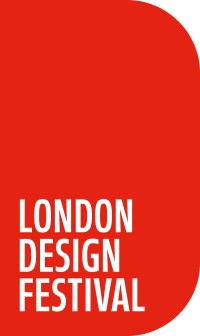)
“Nature is more often about collaboration than competition, and lichen (when fungi and algae come together to form something entirely new) show us that,” John Oswald, managing director of Accenture Song Sustainability Studio, and self-confessed lichen enthusiast, tells the audience.
“Sustainability is not a zero-sum game anymore. We’re not trying to grab for the same thing or own a piece of Intellectual Property. We are working towards regenerative outcomes, which means we have to work differently.”
At the heart of that different way of working is collaboration. Not just with different people or teams within your company, but within your industry and across business types and functions, too.
“You can’t ‘win’ at sustainability,” says fashion designer Phoebe English.
“You can only collaborate and be a movement together. People understand and recognise that working in a different way isn’t necessarily about having a USP that you own as a company. People understand it’s part of a larger thing and a very important larger thing.
“Good collaboration,” adds Marcus Engman, Chief Creative Officer of Ingka Group, “is built upon generosity and curiosity.”
A major reason why IKEA, part of the Ingka Group, has made the tools they developed around product development and circularity an open source resource for the industry and other designers. Sharing knowledge is something English is passionate about, too. “We believe that this way of working – the message behind it – has greater value than the clothes we’re actually making,” she explains. Working in that way and sharing their findings, learnings, and processes, particularly with the next generation of design talent is something she feels is key. “Getting that within syllabuses and not just a sustainability project here and a recycling project there, but actually having that embedded within all design ethos and practice.”
Perhaps more important than working across the sector or with educational bodies, argues furniture designer Sebastian Cox, is collaborating directly with natural systems; “keeping mother nature as a stakeholder.”
Thinking locally, he believes, has been the best way to try to figure out our interconnected systems. “It’s my way of trying to understand an incredibly complicated picture which is globalisation. I don’t reject it,” he adds, “I see value in it; I embrace global connectivity, but I do think we need to question our massive global system and its inherent problems.”
Often seen as the antithesis of nature, technology also has an important role to play.
“Often larger organisations will tend to operate based on the software they’ve got,” observes Oswald.
“You implement a package of software: it makes you think a certain way. So therefore, as technologists, you’ve got a massive opportunity to launch a slightly different way of doing your operations. For example, if you were able to look at extended producer responsibility and build that into a system, then you would start to understand where your plastic comes from. And maybe find alternatives to plastic, and understand your legal exposure. Because that software is available, you start using it, so therefore, regeneration, sustainability, becomes a bit more normalised.”
Technology also has the ability to model systems, creating a whiteboard of sorts. “If you are able to model a digital twin of a production process, then you can change something without having to commit vast amounts of expenditure and waste,” offers Oswald.


)
)
)
)
)
)
)
)
)
)
)
)
)
)
)
)
)
)